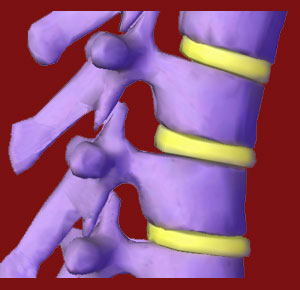
Facet joint foraminotomy surgery can be performed when bone spurs growing on and around the spinal joints contribute to neuroforaminal stenosis and lead to pinched nerve symptomology. Foraminotomy surgery is usually minimally invasive when performed alone, but is often also combined with other types of spinal operations for a much more invasive surgical undertaking.
What is foraminotomy and what conditions are treated using the procedure? Will the surgery be effective and bring about a cure for the symptoms of foraminal stenosis? What are the risks involved and is there a better way to treat the condition? These are all important questions at the forefront of every preoperative patient’s mind.
This discussion explores the use of foraminal surgery in and around the facet joints and specifically focuses on resolving external facet pathology using this innovative surgical technique.
Facet Joint Foraminotomy Indications
Foraminotomy is not typically used in cases of facet joint syndrome. The treatment does not provide relief for symptoms that originate from within the facet joints. Instead, foraminotomy is utilized when osteophytes, also known as bone spurs, grow on the exterior of the facet joints and partially or completely block the neuroforamen. These are the openings through which the spinal nerve roots exit the vertebral anatomy.
If a foramen is blocked, the nerve might become trapped and compressed within the opening. This can cause a compressive neuropathy condition, frequently known as a pinched nerve. In cases of skeletal foraminal stenosis such as that caused by facet osteophytes, symptoms will likely progress and become a chronic complaint. Few conditions will resolve by themselves and most will require invasive care or the only other nonsurgical therapy option: spinal decompression.
Facet Joint Foraminotomy Explanation
Foraminotomy is a method of enlarging the foramen in order to provide the exiting nerve with adequate room to egress from the spine without suffering compression. In essence, the technique simply makes a hole larger, eliminating whatever is currently blocking the opening and causing it to lose patency.
Foraminotomy is a simple surgical technique, but care must be exercised, since the procedure takes place in and around a spinal nerve root. If this nerve is damaged in any way, the patient will likely suffer permanent dysfunction of motor and or sensory abilities and may also suffer autonomic effects, as well.
Foraminotomy is often combined with other spinal operations to manage combined causes of spinal and foraminal stenosis. Typical synergistic operations include laminectomy, discectomy and even spinal fusion. These more involved combination surgeries are much more significant and damaging to the spinal anatomy than simple foraminotomy.
Facet Joint Foraminotomy Factsheet
Foraminotomy can be a valuable surgical treatment for patients with confirmed cases of neuroforaminal stenosis causing a pinched nerve. In most cases, care can be successfully delivered, freeing the nerve and ending symptoms. However, it is crucial to understand that pinched nerves are some of the most often misdiagnosed of all spinal conditions. This helps explain why so many technically perfect operations fail to achieve the therapeutic goal of providing relief.
Patients who are considering foraminotomy should take extra time and effort to ensure the accuracy of their diagnosis before scheduling any procedure. Additionally, if the diagnosis is verified, always take special care to find the very best doctor who can perform the operation using the least invasive methods of care to minimize trauma, pain and recovery time.
As a final piece of guidance, we also want to make all pre-surgical patients aware that nonsurgical spinal decompression also is an indicated care practice that can cure some types of foraminal stenosis without any surgery whatsoever. Most patients would benefit by investigating this noninvasive option before committing to surgical intervention.
Facet Joint Pain > Facet Joint Surgery > Facet Joint Foraminotomy





